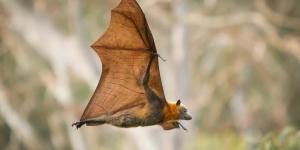Where Do Rhinos Live?


The world's remaining rhinoceros species are truly magnificent creatures, boasting impressive size and unique adaptations. However, their very existence hangs in the balance due in part to habitat loss and fragmentation. Understanding where rhinos live and why is crucial for their conservation.
This AnimalWised article explores the habitats and distribution of rhinos, examining how these creatures have adapted to a variety of environments across Africa and Asia.
What are rhinos?
Rhinos, short for rhinoceroses, are large, herbivorous mammals known for their distinctive physical features, including thick skin, large bodies, and one or two prominent horns on their snouts. There are five species of rhinos, divided between Africa and Asia, each with unique characteristics:
African Rhinos
- Black Rhinoceros (Diceros bicornis): smaller than the white rhino, with a pointed upper lip adapted for grasping leaves and branches of bushes and trees. Two horns, with the front one being longer, used for defense and foraging. Its conservation status is "critically endangered" due to poaching and habitat loss.
- White Rhinoceros (Ceratotherium simum): the largest rhino species, with a square upper lip designed for grazing on grass. Two horns, the front horn is longer, sometimes reaching lengths of over a meter. Its conservation status is "near threatened", with the southern subspecies being more numerous than the critically endangered northern subspecies.
Asian Rhinos
- Indian Rhinoceros (Rhinoceros unicornis): single black horn and unique skin folds that give it an armored appearance. One horn, used for defense, intimidation, and digging for water and minerals. Its conservation status is "vulnerable", though significant conservation efforts have helped increase their numbers.
- Javan Rhinoceros (Rhinoceros sondaicus): similar in size to the Indian rhino but with a less pronounced armor-like skin. Usually one horn, smaller than that of the Indian rhino. Its conservation status is "critically endangered", with only one known population remaining.
- Sumatran Rhinoceros (Dicerorhinus sumatrensis): the smallest rhino species, with distinct reddish-brown hair covering its body. Two horns, though the second horn is often small and may not be visible. Its conservation status is "critically endangered", facing severe threats from poaching and habitat loss.
General Characteristics
- All rhinos have thick skin, but only the Asian species have distinct folds that resemble armor plates.
- Most are solitary, except for the white rhinoceros, which can be somewhat social.
- They are herbivorous, with diets varying from grasses (grazers like the white rhino) to leaves, shoots, and branches (browsers like the black rhino).
- Rhinos have a long gestation period, typically around 15-16 months, and usually give birth to a single calf.
Read this other article to explore the differences between the five rhino species.

Distribution of rhinoceros
The geographic distribution of rhinoceros species across Africa and Asia reflects a complex interplay between habitat suitability and the historical and ongoing impacts of human activities on their populations. This section provides a concise overview of the current distribution patterns for each extant rhino species.
African Species
- Black Rhinoceros: once widespread across sub-Saharan Africa, intensive poaching and habitat destruction have drastically reduced their numbers. Today, they are predominantly located in protected areas within Namibia, South Africa, Tanzania, and Zimbabwe.
- White Rhinoceros: this species has seen some conservation success, mainly inhabiting the southern and eastern regions of Africa, with notable populations in South Africa, Namibia, Kenya, and Zimbabwe.
Asian Species
- Sumatran Rhinoceros: the smallest and among the rarest rhino species, found in the rainforests of Sumatra, Indonesia.
- Javan Rhinoceros: now critically endangered, this species resides in the forested and swamp areas of Java. It once had a broader range across Asia.
- Indian Rhinoceros: predominantly located in northern India and Nepal, conservation efforts have helped stabilize some populations despite their historical decline.
Rhinos are known for their iconic horns, which are made of keratin, the same protein found in human hair and nails. These horns have been a target for poaching due to their use in traditional Asian medicine and as status symbols.
As a result, rhinos are threatened by habitat loss, poaching, and human-wildlife conflict, leading to declines in their populations and making them one of the most endangered groups of mammals on Earth.
In response, significant conservation initiatives, including the establishment of protected areas and nature reserves across Africa and Asia, captive breeding programs, and public awareness campaigns, aim to safeguard these animals and their critical role in their ecosystems.
Black rhinos are known for their love of alone time, but they're not the only ones! Discover a whole world of solitary animals you might not know about

Habitat of the rhinoceros
Rhinoceroses depend heavily on specific ecosystems tailored to their needs for food, water, and shelter. These ecosystems vary widely across the different rhino species found in Africa and Asia, each adapted to its unique environment.
African Species
- Black Rhinoceros: this species resides in a mix of forests, savannahs, and scrublands throughout sub-Saharan Africa. They seek out dense vegetation for feeding and open spaces for resting and hydration, showcasing their adaptability to a range of African habitats.
- White Rhinoceros: favoring the expansive savannas and open grasslands, white rhinos are grazers who thrive in environments where grass, their staple diet, is plentiful. Their habitat preference underscores the critical role of open, grassy landscapes in their ecology.
Asian Species
- Sumatran Rhinoceros: native to the dense forests and rainforests of Sumatra, Indonesia, this species requires lush vegetation and constant access to water for drinking and bathing, highlighting the importance of rainforest conservation.
- Javan Rhinoceros: now primarily found in the tropical forests and swampy areas of Java, they originally ranged across various Asian habitats. Their current preference for wooded and swampy areas demonstrates their need for dense vegetation and water sources.
- Indian Rhinoceros: preferring forests and flooded grasslands, this species inhabits the reserves and national parks of northern India and parts of Nepal. Their dependence on humid forests and aquatic plants for feeding emphasizes the necessity of wetland conservation.
The preservation of these varied habitats is crucial for the survival of rhinoceros populations. Deforestation, agricultural expansion, and human development pose significant threats, leading to habitat degradation and fragmentation.
For more information on endangered animal species, take a look at our article on 10 animals in danger of extinction.

If you want to read similar articles to Where Do Rhinos Live?, we recommend you visit our Facts about the animal kingdom category.
- Amin, R., Thomas, K., Emslie, R.H., Foose, T.J., & Strien, N.V. (2006). An overview of the conservation status of and threats to rhinoceros species in the wild . International Zoo Yearbook, 40(1), 96-117.
- Dinerstein, E., & Price, L. (1991). Demography and habitat use by greater one-horned rhinoceros in Nepal. The Journal of Wildlife Management , 401-411.
- Pant, G., Maraseni, T., Apan, A., & Allen, B.L. (2021). Predicted declines in suitable habitat for greater one-horned rhinoceros (Rhinoceros unicornis) under future climate and land use change scenarios . Ecology and Evolution, 11(24), 18288-18304.
- Rawat, G. S. (2005). Vegetation dynamics and management of Rhinoceros habitat in Duars of West Bengal: An ecological review . National Academy Science Letters, 28(5/6), 179.
- Tatman, S.C., Stevens‐Wood, B., & Smith, V.B. (2000). Ranging behavior and habitat usage in black rhinoceros, Diceros bicornis, in a Kenyan sanctuary. African Journal of Ecology , 38(2), 163-172.








